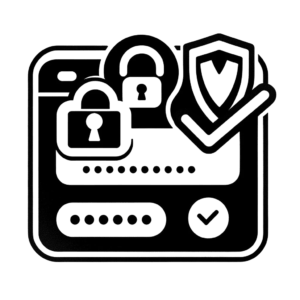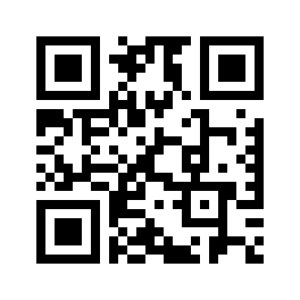Understanding the Importance of Robust Authentication Mechanisms

In the realm of cybersecurity, the importance of robust authentication mechanisms cannot be understated. Strengthening authentication mechanisms is paramount in safeguarding sensitive data and preventing unauthorized access to systems and networks. Without proper authentication measures in place, malicious actors can easily exploit vulnerabilities and compromise security.
Using multiple ways to prove your identity, like biometric scans and strong passwords, can keep your accounts safe. Multi-factor authentication makes it really tough for bad guys to hack into your account by asking for more than just a password. Biometric authentication uses things like your fingerprint or face to make sure it’s really you accessing your account, making it even more secure.
In addition, making sure your passwords are strong by using a combination of letters, numbers, and symbols, as well as changing them regularly, can help protect you from hackers trying to guess your password. It’s important to teach people about making strong passwords and using secure ways to log in to help keep our information safe from cyber attacks.
By using strong ways to confirm someone’s identity and taking steps to make sure authentication is secure, companies can lower the chances of hackers getting access to sensitive information and make their digital defenses stronger.
Current Challenges in Authentication Security
As online security threats are getting more advanced, companies are having a harder time keeping their login systems safe. One big problem is that a lot of people use weak passwords, which make it easy for hackers to break in using brute force or phishing. Another issue is when hackers use stolen passwords on different websites, taking advantage of people who use the same password for everything.
Moreover, old-fashioned ways of proving who you are, like passwords and security questions, aren’t enough to keep important information safe anymore. Two-factor authentication (where you have to verify your identity in two different ways) is more common now, but it’s not perfect either. Hackers can sometimes find ways around it, like swapping SIM cards or intercepting your communication. Biometric authentication, like fingerprint or face recognition, is seen as even safer, but it also has issues to watch out for, like privacy worries and the risk of someone pretending to be you.
As companies work to improve their security, they need to use important tools like multi-factor authentication, behavioral biometrics, and keeping an eye on how users behave. It’s also important to have strong systems in place to control who can access important information. By taking these steps and being proactive about security, companies can make sure their systems are well-protected against new threats.
Multi-Factor Authentication (MFA) as a Security Measure
Working Principles of MFA
In the world of online security, Multi-Factor Authentication (MFA) is a key tool for making sure only you can access your accounts. Instead of just using a password, MFA requires you to provide more than one way to prove who you are, like a password plus a fingerprint or a special code. This makes it much harder for hackers to break in and steal your information.
One of the fundamental principles behind MFA is the concept of “something you know, something you have, and something you are.” This means that to gain access to a system or platform, users must provide a combination of knowledge (password), possession (smartphone or token), and inherence (biometric data). By integrating these diverse authentication factors, MFA creates a robust defense against various cyber threats, including phishing attacks and credential stuffing.
Implementing MFA requires a thoughtful approach that balances usability with security. Organizations must carefully evaluate the level of risk associated with their systems and select the appropriate authentication methods accordingly. Moreover, regular monitoring and updates are essential to ensure the effectiveness of MFA in safeguarding sensitive data and upholding the integrity of digital assets.
Benefits and Challenges of Multi-Factor Authentication
MFA is really important for keeping your online accounts safe. Basically, it adds extra steps for you to prove that you are who you say you are, like entering a password, getting a text message code, or using your fingerprint. This makes it a lot harder for hackers to get into your accounts and keeps your personal information secure.
Although MFA has its benefits, it can also be difficult to use. One common problem is that it may be bothersome for users if the login process takes too long or is too complicated. This can make users frustrated and resistant to using MFA, especially if they value ease of use over security. There can also be issues with certain devices or apps not working properly with MFA, which can cause interruptions during login.
Despite these challenges, the benefits of MFA outweigh the drawbacks, making it a crucial strategy for enhancing security measures and safeguarding sensitive data. By understanding both the benefits and challenges of MFA, organizations can make informed decisions and implement effective authentication mechanisms to mitigate cyber risks.
Biometric Authentication: The Future of Security
Insights into Biometric Authentication
Biometric authentication is a secure way to prove who you are online. It uses things like your fingerprints, face, or eye patterns to confirm your identity. This technology helps companies strengthen their security and keep your personal information safe.
Biometric authentication is a really accurate way to confirm someone’s identity. It’s much harder for someone to pretend to be you compared to using a password. This is why lots of companies use biometrics to keep their systems and information safe from hackers.
Biometric authentication can provide better security, but it also comes with some difficulties. These can include privacy issues and ethical concerns, as well as the risk of spoofing attacks. Organizations need to be cautious when setting up biometric systems and follow best practices to protect against these risks and keep their authentication methods safe.
In conclusion, using biometric authentication in security strategies can help improve how we verify identities and strengthen our overall cybersecurity defenses. By learning about the advantages and obstacles of biometric technology, organizations can create strong security measures to prevent unauthorized access and keep important data safe.
Pros and Cons of Biometric Authentication
Biometric authentication is a great way to make sure it’s really you logging in. It uses unique things like your fingerprints, eye patterns, or face to check your identity. This makes it super hard for someone else to pretend to be you. It’s a safer and easier way to prove who you are.
Furthermore, biometric authentication makes it easier for users by getting rid of the hassle of remembering difficult passwords or carrying around physical tokens. This not only provides a more convenient experience for users but also lowers the chances of security issues like phishing and brute force attacks that are often caused by weak passwords. Additionally, biometric authentication helps protect user privacy because biometric data is usually kept safe on the device or stored in a highly encrypted manner.
However, biometric authentication is not without its drawbacks. One of the main concerns is the potential risk of biometric data being compromised. In the event of a data breach, biometric information cannot be changed like a password, posing a long-term security threat to individuals. Furthermore, there are also privacy concerns regarding the collection and storage of biometric data, as it may raise ethical issues and potential misuse by unauthorized parties.
In conclusion, while biometric authentication offers significant advantages in enhancing security and usability, it is essential to carefully consider the potential risks and drawbacks associated with the implementation of biometric authentication systems.
Quick Response (QR) Code Authentication
Understanding QR Code Authentication
In today’s world of technology, it’s really important to have strong ways to prove who you are online. One way to do this is by using QR codes as a way to make sure only the right people can access important information. This can help keep data safe and protect digital files from getting into the wrong hands.
QR code authentication is a way to verify a user’s identity using special codes that can be scanned with a smartphone or other device. By adding QR codes to the login process, companies can make their systems more secure.
One great thing about QR code authentication is how easy and convenient it is for users. Instead of having to remember long and complicated passwords or carry around physical security devices, all you have to do is scan a QR code to prove it’s really you. This not only makes things simpler for users, but also helps keep their accounts safe from hackers trying to steal passwords or break in.
As cyber threats continue to evolve and become more sophisticated, strengthening authentication mechanisms such as QR code authentication is essential for ensuring the security of sensitive data and protecting against potential breaches. By understanding the fundamentals of QR code authentication and implementing it effectively, organizations can significantly enhance their overall security posture.
How Secure is QR Code Authentication?
When it comes to strengthening authentication mechanisms, QR code authentication has become increasingly popular. But how secure is it really? QR code authentication involves scanning a QR code with a smartphone to verify identity and grant access. While convenient, this method has its vulnerabilities that can be exploited by cyber attackers.
One of the main concerns with QR code authentication is the potential for malicious QR codes. Hackers can easily create fake QR codes that lead users to phishing websites, where sensitive information can be stolen. Additionally, QR codes can be intercepted and replaced with malicious codes, allowing attackers to gain unauthorized access.
In order to make QR code authentication more secure, it is important to take extra steps like adding encryption and multi-factor authentication. Encryption helps protect the information sent through the QR code from being accessed by unauthorized parties. Multi-factor authentication adds an additional level of security by asking users to provide more than one form of proof of their identity.
In conclusion, using QR codes for verifying identity can be easy, but it’s important to be aware of their weaknesses and take steps to make sure they’re safe. By adding extra security measures and keeping an eye out for any possible dangers, organizations can make sure that using QR codes to verify identity stays a secure way to do things.
Combining Strategies for Optimum Security
When it comes to keeping your accounts secure, it’s important to use different methods to make sure your information stays safe. One important way to do this is by using multi-factor authentication on all your accounts. MFA means you have to provide at least two different ways to prove it’s really you before you can get in, which makes it harder for someone to hack into your account using just a password. Another way to make sure only the right person can access your sensitive information is by using things like your fingerprint or face to confirm your identity, known as biometric authentication.
Keeping your information safe is crucial, and one way to do that is by regularly reviewing and checking for any security gaps. By doing regular audits, we can find and fix any weak spots in how we verify who is allowed to access our systems. It’s also important to stay informed about new ways to keep our information secure, so we can adjust our methods as needed.
Additionally, implementing better password rules like using strong and unique passwords, as well as changing them regularly, can greatly lower the chances of hackers getting into your accounts. Teaching people about why security is important and showing them how to spot fake emails and harmful software can also help make sure your information stays safe.
In conclusion, by combining multiple strategies such as MFA, biometric authentication, security audits, password policies, and user education, organizations can create a robust and resilient authentication framework that significantly enhances overall security posture.
Keeping up With the Future of Authentication
In today’s fast-paced digital world, where online dangers are always changing, it’s crucial to keep up with the latest ways to confirm your identity. Improving the way we verify who we are is key to keeping our private information secure and preventing unauthorized people from getting into our accounts.
As technology keeps changing how we use digital systems, old-fashioned passwords are no longer enough to protect against clever cyber attacks. That’s where new methods of authentication come in, like using more than one factor to confirm your identity, using your unique biological traits for identification, and analyzing how you typically behave online to keep your information safe from hackers.
Using advanced security measures like multi-factor authentication can greatly enhance security for organizations and lower the chances of data breaches. With multi-factor authentication, users have to confirm their identity with more than just a password – they might also need to use their fingerprints or security tokens. Biometric authentication is a type of multi-factor authentication that uses unique physical features like fingerprints or facial recognition to allow access to approved users.
Furthermore, behavioral analytics analyze user behavior patterns to detect anomalies and flag suspicious activities, proactively thwarting potential threats. Embracing these future-proof authentication strategies is crucial to staying a step ahead of cyber adversaries and safeguarding valuable information in an increasingly digital world.


